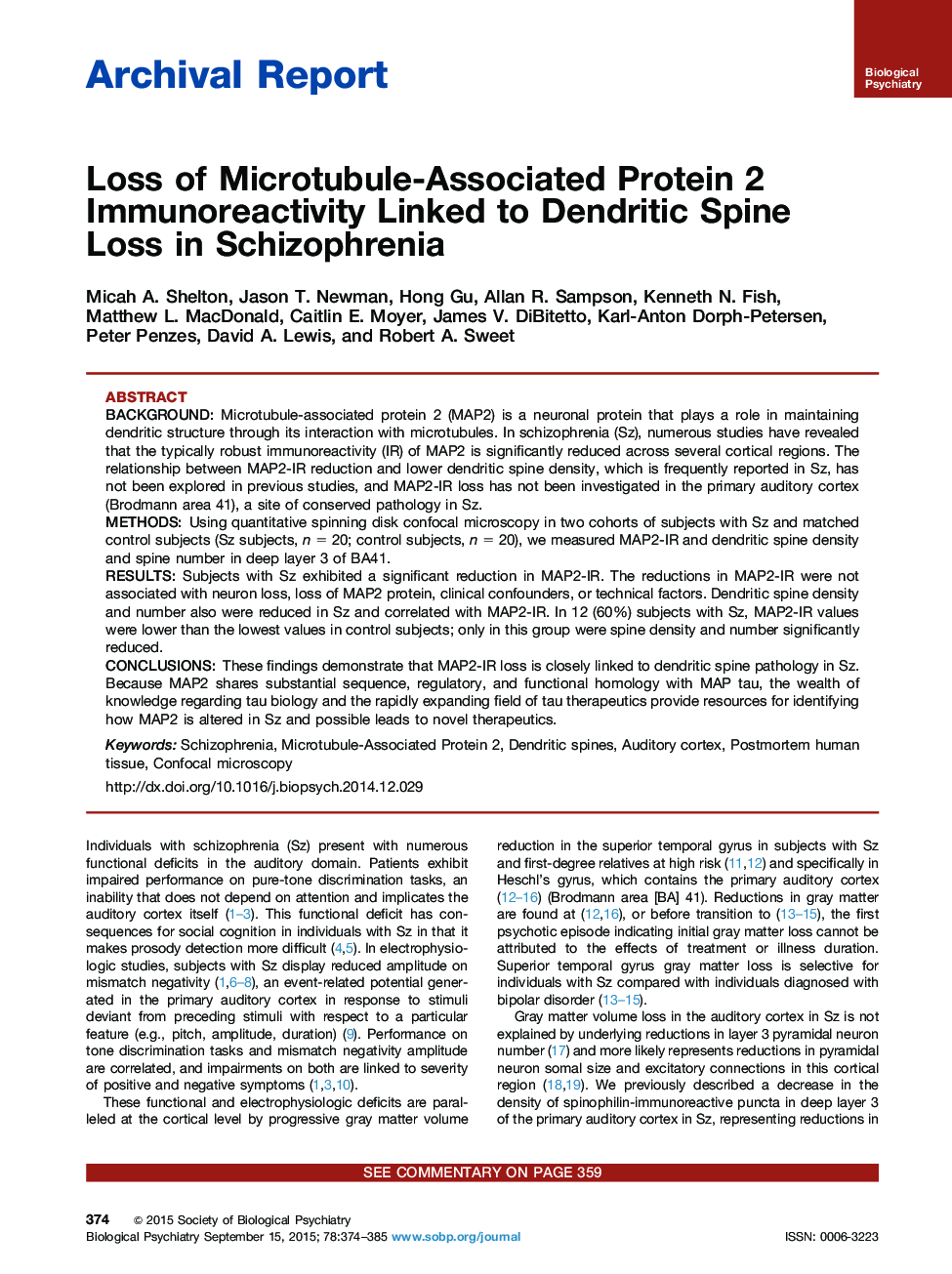| Article ID | Journal | Published Year | Pages | File Type |
|---|---|---|---|---|
| 4177138 | Biological Psychiatry | 2015 | 12 Pages |
BackgroundMicrotubule-associated protein 2 (MAP2) is a neuronal protein that plays a role in maintaining dendritic structure through its interaction with microtubules. In schizophrenia (Sz), numerous studies have revealed that the typically robust immunoreactivity (IR) of MAP2 is significantly reduced across several cortical regions. The relationship between MAP2-IR reduction and lower dendritic spine density, which is frequently reported in Sz, has not been explored in previous studies, and MAP2-IR loss has not been investigated in the primary auditory cortex (Brodmann area 41), a site of conserved pathology in Sz.MethodsUsing quantitative spinning disk confocal microscopy in two cohorts of subjects with Sz and matched control subjects (Sz subjects, n = 20; control subjects, n = 20), we measured MAP2-IR and dendritic spine density and spine number in deep layer 3 of BA41.ResultsSubjects with Sz exhibited a significant reduction in MAP2-IR. The reductions in MAP2-IR were not associated with neuron loss, loss of MAP2 protein, clinical confounders, or technical factors. Dendritic spine density and number also were reduced in Sz and correlated with MAP2-IR. In 12 (60%) subjects with Sz, MAP2-IR values were lower than the lowest values in control subjects; only in this group were spine density and number significantly reduced.ConclusionsThese findings demonstrate that MAP2-IR loss is closely linked to dendritic spine pathology in Sz. Because MAP2 shares substantial sequence, regulatory, and functional homology with MAP tau, the wealth of knowledge regarding tau biology and the rapidly expanding field of tau therapeutics provide resources for identifying how MAP2 is altered in Sz and possible leads to novel therapeutics.
